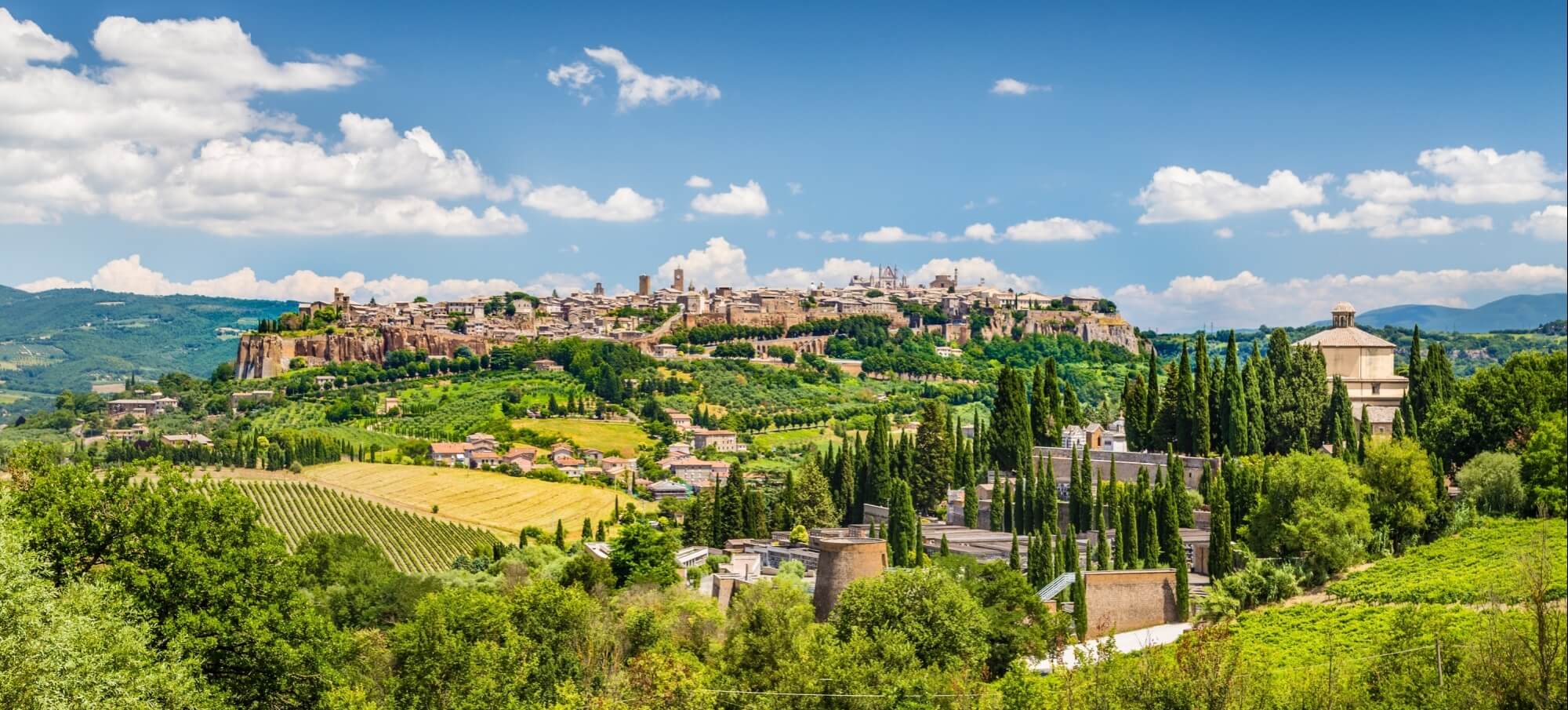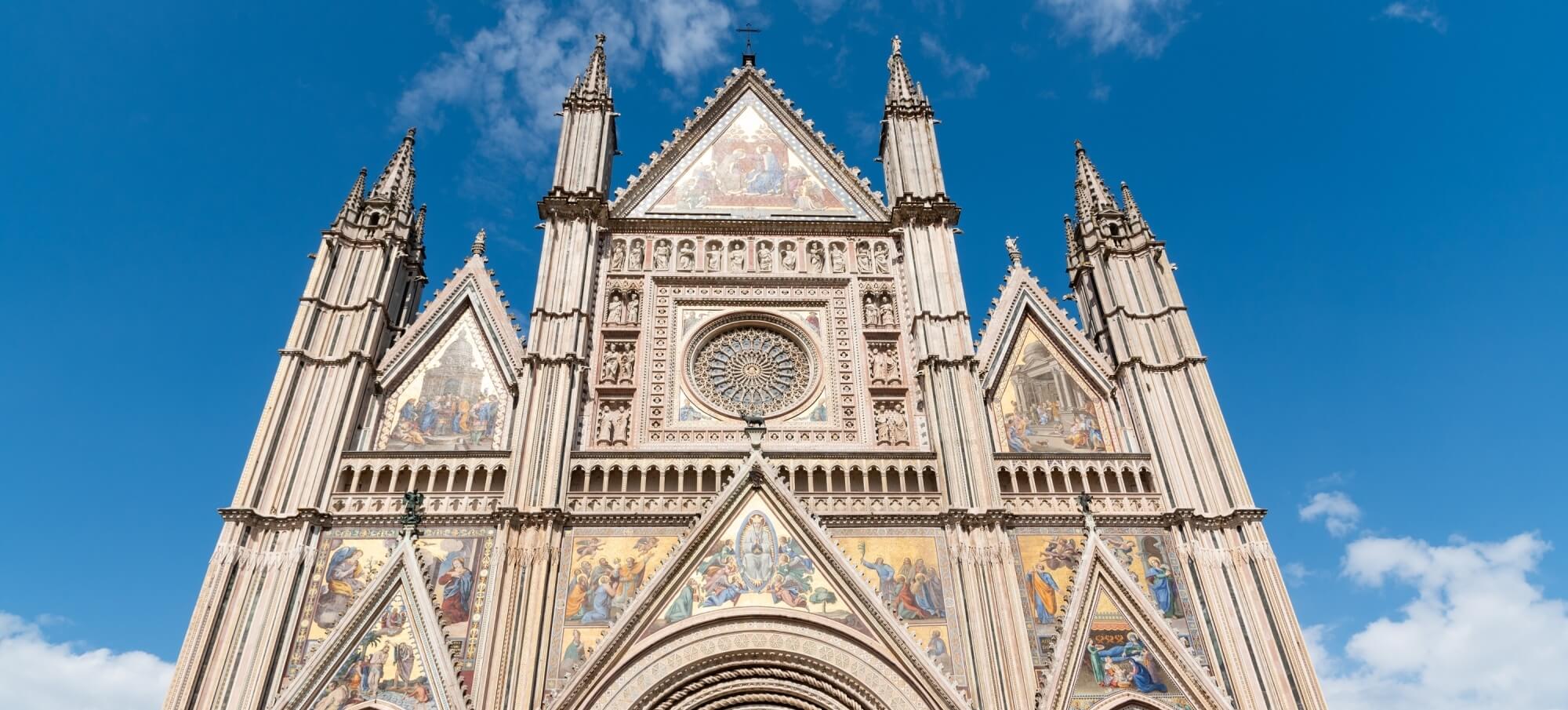Umbria – a world of treasures
The green heart of Italy

Culture, art, historic cities with incredible traditions, passion for food and wine, eternal masterpieces and ethereal landscapes. It can only be Italy, the land of never ending surprises, timeless heritage and a flair for all things deliciously divine. Superlatives never go far enough to describe what beauty lies within any Italian jaunt, especially when it may come unexpectedly. Umbria lies in the heart of the country, an epicentre of such diverse and all-encompassing experiences that you will wonder why you haven’t visited before.
Gentle hills and poetic vineyards, medieval towns and lush expanses of olive groves, life is enjoyed at a slower pace here. One idyllic town after the other, one magical masterpiece after the other, this is a land of exceptional natural beauty, lovely frescoed churches, plates piled with cured meats and a never-ending list of festivals. Come and explore a most enjoyable revelation, the wild, untouched feel of a region that’s the ideal destination for explorers, foodies and art lovers alike.
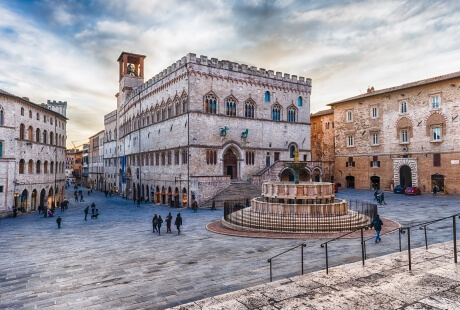
1. A region of divine art
First populated by the Umbri tribe in the 6th c BC, Umbria is a living masterpiece. Dramatically-set hilltop towns, resplendent in their lovely medieval centro storico, enriched by art museums and churches decorated with precious altarpieces: in Umbria the fairy tale is real. Perugia, the region’s capital is charismatic, delightful and fascinating: a city of culture – the University for foreigners and the State University are located here - admire the symmetry of Piazza V Novembre and the pink and white-marble 13th c. Fontana Maggiore to capture its beauty. Explore the Galleria Nazionale dell’Umbria, hosted in the Palazzo dei Priori, to see fabulous artworks by Gentile da Fabriano, Beato Angelico and Piero della Francesca, then head to the 15th c. Nobile Collegio del Cambio and enjoy its stunning furniture and Perugino frescoes, followed by the 14th c. Nobile Collegio della Mercanzia for more stunning decorations. Set in the northern part of the region, Gubbio is known as the city of stone: evocative and striking, it hosts a “suspended” Piazza Grande with the Palazzo dei Consoli and Palazzo Pretorio. Visit the 13th c. Cathedral to soak in its atmospheric interior and marvel at the 12th c. stained glass window. Walk around the Fontana dei Matti in the main square three times and have a local inhabitant pour water over you: you will earn your badge as “matto” – a crazy person! Postcard- pretty Spello is famous for its Infiorata, where inhabitants adorn the streets with flower petals to create a stunning, colourful carpet. Walk around the pale-coloured stone houses and head to the 12th c. Chiesa di Santa Maria Maggiore to see the beautiful Cappella Baglioni: decorated with frescoes by local artist Pinturicchio, the chapel also contains a marvellous majolica floor
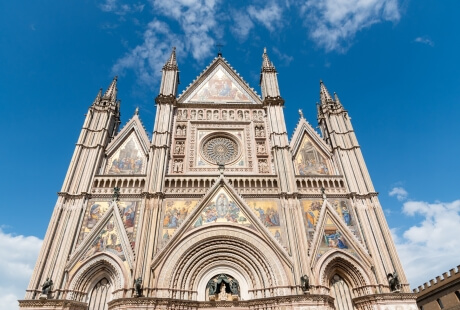
2. Orvieto – a gem shining bright
Imposing and beautiful, approaching the 13th c. Duomo di Orvieto from a small alley seems like an illusion. The façade of this intact masterpiece is simply stunning: a profound blend of architecture and decorative arts that features mosaics and bas-reliefs, this mesmerising Gothic masterpiece entails a splendid rose window by Andrea Orcagna. Step inside to admire the splendid fresco cycle by Fra Angelico and Luca Signorelli depicting The Last Judgement in the San Brizio Chapel. Michelangelo is said to have taken inspiration from here for his eternal Sistine Chapel masterpiece. Designed by Antonio da Sangallo the Younger, Saint Patrick’s Well is a virtuoso work of engineering that was built to supply the town with water. Run by two separate helical staircases, the 62 metre-high well was commissioned by Pope Clement VII in 1527, its construction lasting ten years.
The town is also rich in cultural sights, like the Archeological and Civic Museum, the Emilio Greco Museum, hosting modern art works and the Luigi Mancinelli municipal theatre, dating back to 1844. Among the striking aspects of this lovely town, the incredible maze of underground tunnels undoubtedly impresses visitors: a fascinating series of artificial caves created tunnels, cisterns, quarries, cellars and wells. The tunnels can be visited and it is a perfect chance to admire the history of the city, from its Etruscan origins across its medieval, renaissance and subsequent development periods.
Orvieto is also famous for its laces and ceramics. Dating back to Etruscan times, the buccheri artefacts were initially produced with highly-refined clay and fired in charcoal, with the absence of oxygen. Majolica production blossomed in the middle Ages, with variations added across the centuries. Known as the Orvieto style ceramics, a few workshops still produce graceful pieces that epitomise the skill and wisdom of an ancient craft. Initially called “Irish trina”, crochet lace developed in Orvieto in the 17th c. and Ars Wetana was founded in 1900 with the idea of copying motifs from the renowned cathedral. The outcome consists of unique pieces that testify the great skill of local weavers.

3. A region of strong traditions
The Belpaese is an eclectic kaleidoscope of varying traditions and habits. Common to all regions, however, is a strong sense of traditions that are handed down from one generation to the next, jealously guarded and truly respected. Umbria is no exception and you will find many events that showcase the best in local handicraft and medieval charm. Lovely Bevagna, close to Foligno, hosts the Mercato delle Gaite in June, a medieval historical re-enactment that celebrates the priceless heritage of the small town. The Gaite – the four boroughs of San Giovanni, San Giorgio, Santa Maria and San Pietro - pay homage to the skills of local artisans,
with the reconstruction of workshops dedicated to the production of paper, silk, wax and paintings. Gubbio hosts the Corsa dei ceri, taking place yearly on 15 May, one day before the patron saint, Sant’Ubaldo. The “ceri” are three heavy wooden artifacts, surmounted by statues of three saints, George, Anthony and Ubaldo, carried around the town among festive crowds. The event is repeated on the Sunday following the 15 May and then on 2 June again, with a celebration of young children. Foligno is famous for the Giostra della Quintana, taking place between May and June, with la Sfida and in September - la Rivincita. It sees knights proving their skills at hitting a cartoon joust, with the addition of processions, feasts and celebrations happening in the various taverns. Enjoy delicious food while you soak up the atmosphere! And this is merely a selection of the many events that feature throughout the year.
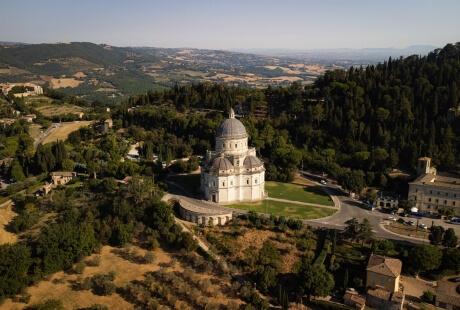
4. A musical masterpiece
Some of the most celebrated classical artists and composers stem from Italy or were inspired by the landscape, the culture and the heritage that speaks so strongly all around Italy. It then comes as no surprise that Umbria, too, offers a vast gamut of top class music festivals. Perhaps the most famous of them all is Umbria Jazz. Celebrating its 50th anniversary this year, this festival is known and loved the world over and always offers a stellar calendar of concerts and events that take place in theatres and arena, but also around the quaint streets of lovely Perugia.
Spoleto’s Festival dei Due Mondi is another unmissable event: running for over 60 years, it celebrates a wide variety of music, from opera to classical music, dance and theatre performances, but also meetings, events and conferences. Orvieto celebrates renowned and emerging Italian artists with its Orvieto Sound Festival, while Todi will entertain guests with its Todi Festival, taking place between July and September: concerts, theatre performances, meetings, special events and so much more in a special setting. Terni welcomes spring with its Cantamaggio Ternano in April and May: dating back to the late 19th c., this is a celebration of all things Umbrian, from local traditions to parades, recitals, concerts and live performances.
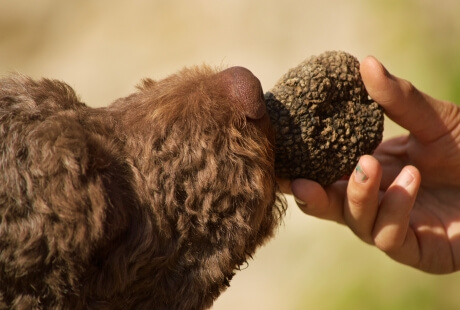
5. A foodie heaven
The real passion Italians have for food means cooking is elevated to full art here. Everywhere you go, you will surely taste exceptional dishes prepared with love. Umbria shares this passion and the local cuisine is based on fresh, local ingredients such as meat, pulses and cereals. Do not leave this region unless you have tried strangozzi or umbricelli pasta, spelt or lentil soup, torta al testo, Cicotto cured meat or the crescionda cake. Come to Scheggino, living in symbiosis with the Nera river, in the Val Nerina, to explore the world of local truffles: il Diamante Nero (Black Diamond) is a festival dedicated to black truffles, a product of excellence of this valley, taking place in late March. Lasting three days with events, presentations and of course tastings, the festival culminates with a record-breaking omelette, cooked with 2,000 eggs and 70 kg of truffles. Norcia is famous for its cured meats, sausages and black truffles, while nearby Castelluccio di Norcia is admired for its lentils, grown in the area as early as the 3rd c. BC – travel to this lovely meadow in Spring to gaze at the splendid colours: the view is unforgettable. Umbria olive oil is excellent: aromatic and with a distinct taste, come to Torgiano to visit the Olive and Olive oil Museum, but also the Wine Museum to learn about local traditions and uses. Local wine is clearly excellent, with the Super Umbrian varieties like Sagrantino di Montefalco DOCG made with local grapes, Torgiano Rosso Riserva DOCG, Grechetto di Todi or Rocciata di Assisi. Artisan beer is also enjoying considerable success, due to the excellent local production. Perugia - famous for its Baci chocolates – hosts Eurochocolate in October, where the most famous chocolatiers in the world come together and showcase their most exquisite productions!
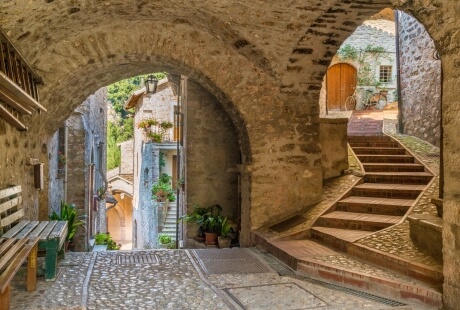
6. A region of hidden gems
If you fancy a trip to nostalgia, visiting the many hidden hamlets of Umbria means enjoying perfectly conserved medieval villages, soaked in the ever-alluring flair of an Italian fairy-tale. Hill-top Bevagna is one such treat: impossibly idyllic, this small town is rich in atmospheric alleys, ancient monuments, and an unexpected mosaic floor from a Roman public bath, dating back to the 1st c. AD. Also worth exploring are the 13th c. Saint Francis’ church, the Civic Museum and the portal of Saint Michele the Archangel’s church, decorated with parts of a roman frame. But it’s Piazza Silvestri you’ll want to head to for a living masterpiece. One of the best preserved in the entire region, intriguing games of perspective offer a scenographic effect, enriched by the presence of the Palazzo dei Consoli, which hosts the 19th c, Francesco Torti theatre. Picturesque Montefalco is famous for its quaint alleys and the frescoes by Benozzo Gozzoli depicting the life of Saint Francis, held in the Church of Saint Francis
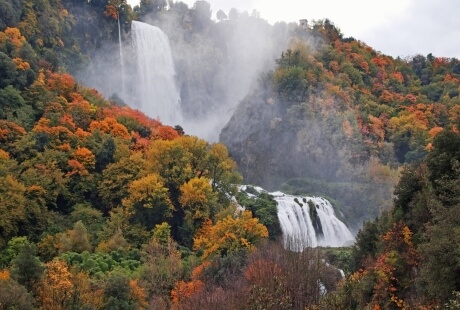
7. A region of water
165-metre high, the Marmore Waterfalls, just outside Terni, are the tallest man made waterfalls the world. Dating back to the Roman times, the waterfalls are also employed to source a power station, so the falls are turned on and off at various times. Several paths will lead to various viewpoints of the waterfalls, including a Lovers’ balcony for a wild experience! It is, however, Lake Trasimeno that steals the scene here. Italy’s fourth largest lake owes its name to Latin and it means “between the mountains” (from the Latin tras minas.
A romantic, vast expanse of water where everything is calm and blissful. Surrounded by medieval towns like Passigliano and Castiglione del Lago, it is home to many bird and fish species, with olive groves, sunflower fields and vineyards as a gentle backdrop. You will find three islands within its area, with Polvese hosting a 14th century fortress and the church of San Giuliano, decorated with ancient frescoes. San Feliciano is where you’ll want to go to learn about the local fishing culture, which still sees sustainability as its core, with zero waste and no industrial techniques applied. Torre del Lago is a tranquil town and it is here that Bartolomeo Borghi wrote the first Italian geographical atlas; the Italian composer Puccini also loved to spend time here, impressed by the gentle atmosphere.

8. A region of devotion
Umbria is home to one of the world’ most important churches: the Basilica of Saint Francis in Assisi. The story of the saint who refused richness in favour of a life of devotion has inspired many pilgrims across the centuries, who come here to follow their faith. The entire city features a special aura that makes it unique, enhanced by the beauty of the frescoes in the interior of the basilica. Carried out by Giotto and assistants in the 13th c., the twenty-eight frescoes decorate the Basilica Superiore with scenes from the life of Saint Francis in vibrant colours. Damaged by an earthquake in 1997, they have been restored to their former glory and gazing at this masterpiece will bring lasting memories. The Basilica Inferiore contains works by Cimabue, Pietro Lorenzetti and Simone Martini, as well as the tomb of Saint Francis in the crypt. Visited all year round, Assisi hosts events and celebrations for Saint Francis’s day on 4 October. Orvieto also holds a special religious celebration for the Corpus Domini with historical parades, celebrations and medieval re-enactments; Santa Rita is also celebrated in Cascia in May, while Città della Pieve pays homage to Saint Peter with a series of striking events.
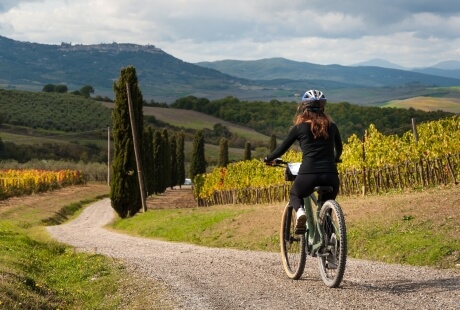
9. A region for sport lovers
It’s not only divine food and splendid frescoes in Umbria, for this is a region for sport enthusiasts. Mountain bike lovers will enjoy the many routes snaking through lovely valleys, such as the Valnerina. The Spoleto to Norcia MTB route goes along the ancient railway that joined Spoleto to Norcia, with a race taking place in September. Other options may be cycling along the Monti Sibillini, taking in Castelluccio di Norcia, Orvieto and the Via dei Calanchi, cycling along Lake Trasimeno, Città di Castello and the Umbria-Le Marche Apennines.
Road bike options are also enticing, with routes including the hills between Umbria and Tuscany, castles around Corciano, along the cycle path between Trevi and Spoleto, Piediluco Lake and the Marmore Falls. The Via di Francesco is a pedestrian route leading to Assisi, undertaken by many pilgrims who recreate a modern pilgrimage on the trail of the renowned saint. Hiking opportunities abound everywhere in Umbria, from the Monti Martani, between Assisi and Spoleto, retracing the steps of the 18th c. Grand Tour in the Narni and Terni area or along the Umbria Grand Canyon, from Titignano, by Orvieto, to Roccaccia along the Forello ravine. And then also horse riding, bird watching and so much more!
WHERE TO STAY
All contents, photos and texts are subject to copyright. They are only authorised on my website and social media. Ideas can be a source of inspiration, but any unauthorised use of images and texts is strictly forbidden. All rights reserved.
